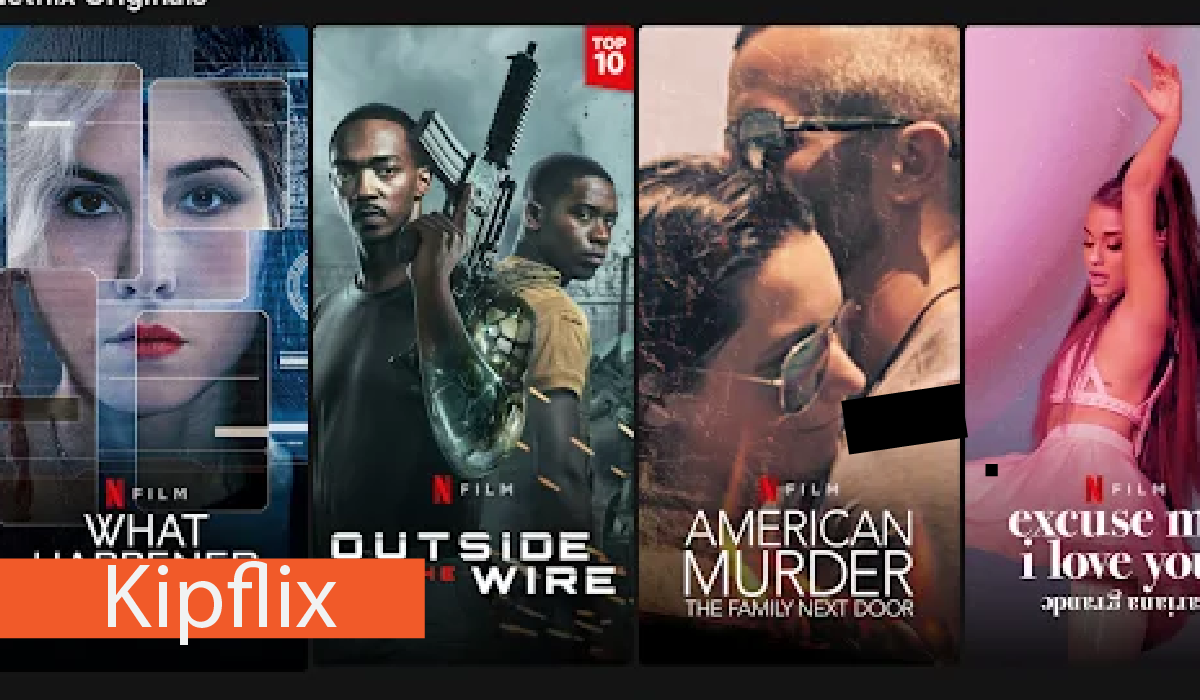In 2025, a single word is making waves across the global streaming landscape — Kipflix. This emerging platform has captured the attention of millions, not just for what it offers, but for how it’s shaking up the entire entertainment ecosystem. While Netflix, Disney+, Amazon Prime, and Hulu continue battling over licensing deals and regional content restrictions, Kipflix has taken a completely different route — one that challenges norms, laws, and business models alike.
Whether it’s a revolutionary tool for digital freedom or a piracy-fueled controversy, one thing is clear: Kipflix is changing how we watch content. In this long and informative article, we’ll dive deep into what Kipflix is, how it works, its risks, legality, user experience, and what it means for the future of global streaming.
What Is Kipflix? A New Age of Streaming Begins
Kipflix is often described as a free streaming platform — but that barely scratches the surface. At its core, Kipflix is a decentralized, open-access content aggregator that allows users to watch movies, TV shows, and documentaries without signing up, logging in, or paying any fees.
Unlike traditional services, Kipflix does not directly host copyrighted content. Instead, it acts as a powerful search and streaming indexer, embedding third-party video players hosted on offshore servers, many of which operate in legal grey zones. For users, the experience is simple: search, click, watch. No ads (or very few), no subscriptions, and no country-based restrictions. This simplicity is what makes Kipflix not just popular but also disruptive in a time when users are fed up with content fragmentation, rising costs, and geo-blocked libraries.
How Kipflix Works – Behind the Streaming Curtain
To understand the impact of Kipflix, one must understand the mechanics behind it. Kipflix functions through a combination of embedded video links, offshore hosting services, mirror sites, and AI-driven content indexing. It doesn’t host the content itself, which allows it to avoid direct liability under most copyright laws. Instead, it pulls video streams from other sources, wrapping them in a clean, fast, and mobile-friendly interface.
If a video is taken down, Kipflix simply updates the link or switches to a mirror domain. This is often powered by dynamic DNS and blockchain-based domain registries, making it difficult for authorities to block the site permanently. AI is also used to recommend content, identify broken links, and manage metadata in real-time. The result? A platform that evolves faster than regulators can catch up.
More From Info: Geekzilla T3: The Ultimate Power Gadget Changing Tech In 2025
Kipflix User Interface and Features
Intuitive Design
The Kipflix interface is a minimalist’s dream. Upon visiting the site, users are greeted with a lightweight search bar, intuitive categories (latest, trending, genres, language), and a clutter-free layout. There are no sign-ups, no paywalls, and most surprisingly, no popups — at least compared to typical piracy platforms. It loads fast, even on mobile data connections, making it perfect for developing countries or low-end devices.
Minimal Ads and Clean Experience
Kipflix sets itself apart from the ad-heavy, malware-laden ecosystem of pirated platforms. While it may show some light banner ads to stay afloat, it avoids invasive pop-ups, redirect loops, and forced registrations. This makes it significantly safer and more pleasant for users than most shadow streaming platforms.
Subtitle Support & Multilingual Access
One of Kipflix’s standout features is its robust subtitle engine. Users can toggle multiple language captions in real-time or even upload custom subtitle files. This accessibility has made it a go-to platform for non-English speakers around the world, especially in countries like Brazil, India, and Egypt.
Device & Platform Compatibility
Kipflix is designed for modern use. It works seamlessly across smart TVs, Android/iOS phones, laptops, tablets, and even game consoles. Because it’s web-based and doesn’t require app installation, it bypasses Google Play and Apple App Store policies altogether.

Legal Status of Kipflix – Is It Safe or Illegal?
The legality of Kipflix is one of its most controversial aspects. Technically, Kipflix doesn’t host copyrighted content, which gives it a thin layer of legal cover. However, embedding links to pirated content is still considered a violation of intellectual property rights in many jurisdictions. Countries like the U.S., U.K., and Germany have already started blocking Kipflix domains at the ISP level.
Users in these regions report browser warnings, connection timeouts, or full denial of access. Moreover, copyright enforcement agencies are beginning to target not just the platform but its users as well, especially in highly regulated countries. VPNs and ad blockers are often recommended, but even these do not guarantee complete safety from legal tracking or data collection. In short: Kipflix exists in a legal grey zone — tolerated in some countries, blocked in others, and constantly under the radar.
Kipflix Ethics Debate – Open Access vs Creator Rights
Is Kipflix an act of digital rebellion or theft? That’s the question echoing across social media and industry panels. Advocates argue that Kipflix democratizes access to global media, especially in regions where people cannot afford $10–20/month subscriptions or where content is restricted due to licensing. It’s a tool of education, cultural access, and digital inclusion. On the other hand, filmmakers, studios, and artists view Kipflix as a platform that undermines their revenue and devalues their intellectual property. By not contributing financially, users indirectly hurt content creators. This ethical divide — between corporate copyright protection and free access for all — has become one of the biggest philosophical battles in the modern streaming age.
Why Kipflix Is Gaining Popularity in 2025
In a world where every major streaming platform locks content behind separate paywalls, Kipflix has emerged as the “people’s choice.” Subscription fatigue is real — with users needing to juggle 5+ services just to watch their favorite shows. Add to that geo-blocks, licensing limitations, and overpriced bundles, and you have the perfect storm for a platform like Kipflix to thrive. The year 2025 has seen a 300% spike in Kipflix traffic, especially from countries like India, Brazil, Nigeria, Ukraine, and the Philippines. Younger audiences prefer simplicity and freedom over loyalty to specific brands. Kipflix provides just that — a centralized, no-cost hub for global entertainment.
Dangers & Risks of Using Kipflix
While Kipflix promises free access, it comes with significant risks. Because it aggregates third-party links, some of these may host malware, tracking scripts, or deceptive ads if not properly filtered. Clicking on the wrong button may trigger auto-downloads or phishing pages. Moreover, the legality issue remains unresolved. Users in countries with strict anti-piracy laws face risks of ISP throttling, legal notices, or even prosecution. VPNs are essential, but not foolproof. Also, Kipflix doesn’t guarantee video quality — streams may lag, be incomplete, or switch languages mid-way. It’s a trade-off between freedom and safety that each user must assess.
Kipflix in Emerging Markets – A Digital Lifeline
For many in emerging markets, Kipflix isn’t just a platform; it’s a lifeline. University students in underfunded institutions use it to access documentaries, educational series, and language tutorials. Families without access to cable or streaming subscriptions use it as their primary source of entertainment. For communities with limited digital rights or where censorship is common, Kipflix becomes a gateway to cultural diversity and independent cinema. The platform’s accessibility and low data usage make it ideal for regions with poor internet infrastructure. While governments debate its legality, for millions, Kipflix represents their only window to global content.
Kipflix vs Legal Streaming Services – Pros & Cons
| Feature | Kipflix | Netflix / Disney+ / Amazon |
|---|---|---|
| Price | Free | $8–$25/month |
| Content Availability | All-in-one | Split by provider |
| Geo-restrictions | None (with VPN) | Many |
| Ads | Minimal to none | Increasing (ad tiers) |
| Video Quality | Variable (depends on source) | Consistent HD/4K |
| Legal Status | Questionable | Fully licensed |
| UX & Interface | Clean, no-login | Advanced UI/UX |
How Kipflix Uses Emerging Tech to Stay Online
To evade shutdowns and legal takedowns, Kipflix leverages modern tech like blockchain-based domains (e.g., .crypto), IPFS (InterPlanetary File System), and peer-to-peer distribution. These technologies decentralize the hosting process, making it almost impossible for governments or companies to take down content permanently. Kipflix also optimizes for low bandwidth and uses mirror links with smart redirect logic to reroute blocked users. In many ways, it’s becoming a symbol of Web3 decentralization applied to digital media.
How to Use Kipflix Safely (If You Choose To)
If you decide to explore Kipflix, follow basic digital hygiene:
- Always use a premium VPN (e.g., NordVPN, ExpressVPN)
- Install ad blockers and anti-malware browser extensions
- Never enter personal information on the site
- Avoid clicking unfamiliar links or download buttons
- Consider using a secure browser like Brave
These precautions won’t guarantee total safety, but they’ll reduce exposure to common threats.
Conclusion
Kipflix sits at the crossroads of access and accountability. For users, it offers a solution to a broken, fragmented streaming economy. For creators and studios, it’s a growing problem that challenges monetization models. Its rise exposes the need for more affordable, unified, and global streaming platforms that respect both creators and consumers. While the debate continues, one truth remains: Kipflix is not just a website. It’s a reflection of a deeper demand — for fairness, access, and control in the digital age.
FAQs
1. What is Kipflix and how does it work?
Kipflix is a free online streaming platform that lets users watch movies, web series, and TV shows without signing up or paying any fees. It works by embedding video links from third-party hosting sites, meaning it doesn’t store or own the content itself. This setup allows Kipflix to deliver fast streaming access but also places it in a legal grey zone in many countries.
2. Is Kipflix legal or safe to use?
The legality of Kipflix depends on your country’s copyright laws. Since Kipflix streams content hosted elsewhere, it often operates outside traditional licensing systems. While it’s not inherently dangerous, users risk exposure to malware, data tracking, or copyright infringement warnings. Using a VPN and ad-blocker is strongly advised for safety.
3. Why is Kipflix so popular in 2025?
Kipflix has exploded in popularity because it offers free, unlimited access to shows and movies that are otherwise locked behind paid subscriptions. As streaming fatigue grows and geo-restrictions frustrate users, Kipflix provides a fast, ad-light, and global alternative for entertainment lovers worldwide — especially in developing markets.
4. What are the main risks of using Kipflix?
The main risks include exposure to malicious links, low-quality or unstable streams, and potential legal consequences in strict copyright regions. Some mirror sites may also include fake download buttons or redirect users to unsafe domains. Caution, VPN protection, and reliable antivirus software are recommended when visiting such platforms.
5. How does Kipflix stay online despite being blocked?
Kipflix stays operational through mirror domains, dynamic URLs, and decentralized technologies like blockchain-based domain registration and IPFS hosting. When one version of the site is taken down, backup domains or mirror sites appear almost instantly, allowing continuous access for users around the world.


